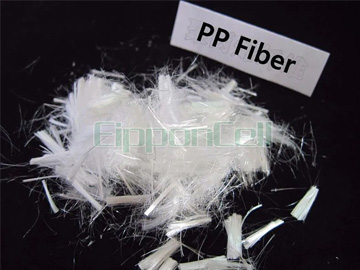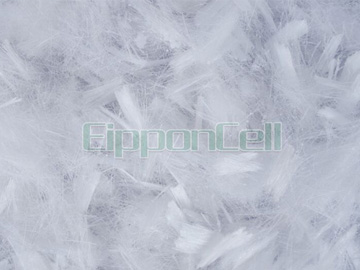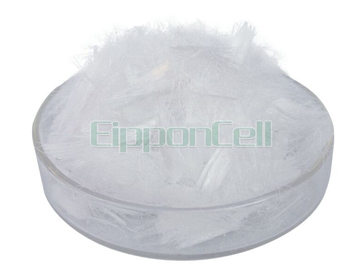Properties of PP Fiber Reinforced Concrete
Before mixing the concrete, the fiber length, amount and design mix variables are adjusted to prevent the PP fibers from balling. Good FRC mixes usually contain a high mortar volume as compared to conventional concrete mixes.
Cracks play an important role because they transform concrete structures into permeable elements and therefore carry a high risk of corrosion. Cracks not only degrade the quality of the concrete and make it aesthetically unacceptable, but also render the structure unusable. If these cracks do not exceed a certain width, they are neither harmful to the structure nor do they affect its serviceability. Therefore, it is important to reduce the crack width, which can be achieved by adding HPMC to the concrete .
Thus, the addition of fibers to the cement concrete matrix can bridge these cracks and prevent them from opening further. In order to achieve greater deflection in the beam, additional forces and energy are required to pull out or break the fibers. This process, in addition to maintaining the integrity of the concrete, improves the load carrying capacity of the structural members beyond cracking. Reinforcing bars in reinforced concrete have the same beneficial effect, as they act as long continuous fibers. However, short discontinuous fibers have the advantage of being uniformly mixed and dispersed throughout the concrete.

The main causes of crack formation are plastic shrinkage, plastic settlement, freeze-thaw damage, fire damage, etc.
Plastic shrinkage: occurs when surface water evaporates before the release water reaches the surface. Polypropylene fibers reduce the area of plastic shrinkage cracks due to their flexibility and ability to conform to shape. The addition of 0.1% (by volume) of fiber was found to be effective in reducing the degree of cracking by a factor of 5 to 10. The degree of crack reduction is proportional to the fiber content of the concrete.
Plastic settlement: High rate of bleeding and settlement combined with restraint to settlement (e.g. by reinforcing bars) leads to settlement cracking. In case of PFRC, fibers are uniformly distributed. Fibers are flexible so they cause negligible restraint to settlement of aggregates.
Freeze thaw damage: Small addition of polypropylene fibers in concrete reduces the flow of water through the concrete matrix by preventing the transmission of water through the normal modes of ingress, e.g. capillaries, pore structure, etc. The implications of these qualities in concrete with polypropylene fiber additions are that cement hydration will be improved, separation of aggregate will be reduced and the flow of water through concrete that causes deterioration from freeze/ thaw action and rebar corrosion will be reduced, creating an environment in which enhanced durability may take place.

Fire damage: Heat penetrates the concrete resulting in desorption of moisture in outer layer. Moisture vapors flow back towards the cold interior and are reabsorbed into voids. Water and vapor accumulate in the interior thereby increasing the vapor pressure rapidly causing cracks and spalling in the concrete. In case of PFRC, the fibers melt at 160oC creating voids in the concrete. The vapor pressure is released in newly formed voids and explosive spalling is significantly reduced.
Properties of PP Fiber Reinforced Concrete
Before mixing the concrete, the fiber length, amount and design mix variables are adjusted to prevent the PP fibers from balling. Good FRC mixes usually contain a high mortar volume as compared to conventional concrete mixes. The aspect ratio for the fibers are usually restricted between 100 and 200 since fibers which are too long tend to "ball" in the mix and create workability problems.

As a rule, PP fibers are generally randomly distributed in the concrete; however, placing of concrete should be in such a manner that the fibers become aligned in the direction of applied stress which will result in even greater tensile and flexural strengths. There should be sufficient compaction so that the fresh concrete flows satisfactorily and the PP fibers are uniformly dispersed in the mixture.
The PP fibers should not float to the surface nor sink to the bottom in the fresh concrete. Chemical admixtures are added to fiber-reinforced concrete mixes primarily to increase the workability of the mix. Air-entraining agents and water-reducing admixtu- res are usually added to mixes with a fine aggregate content of 50% or more. Superplasticizers, when added to fiber-reinforced concrete, can lower water: cement ratios, and improve the strength, volumetric stability and handling characteristics of the wet mix.
